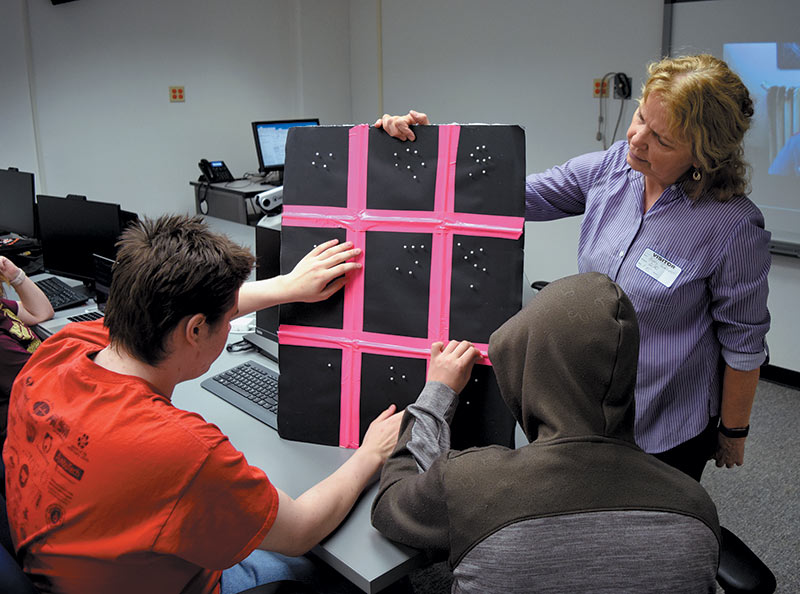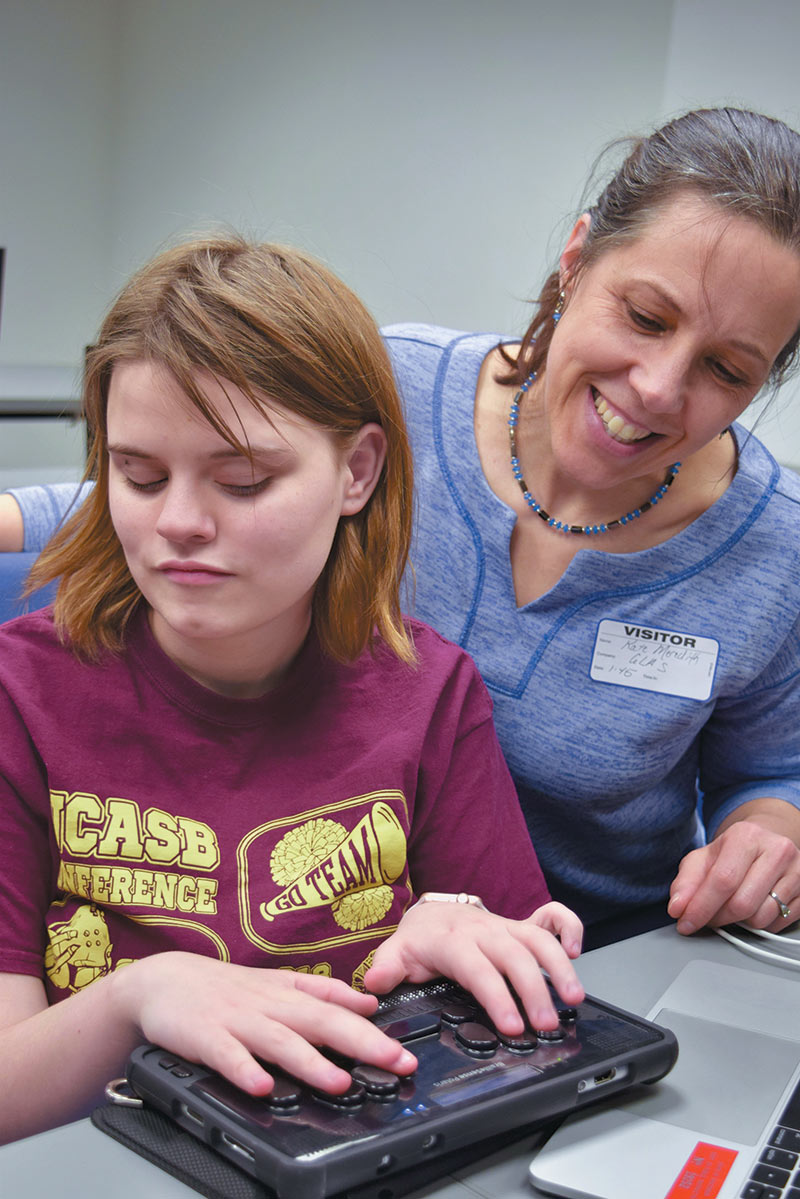Developing a Feel for Astronomy
Fall
2019
Special Feature
Developing a Feel for Astronomy
Korena Di Roma Howley
In October 2018, the closure of the historic Yerkes Observatory in Williams Bay, Wisconsin, could have meant the end of its ongoing projects, including a research initiative aimed at improving astronomy tools and education for the blind and visually impaired (BVI).

But Kate Meredith, the director of education at Yerkes, wasn’t ready to suspend her efforts at making astronomy more inclusive and accessible. She and a colleague struck out on their own to continue the mission of Yerkes Education Outreach, creating Geneva Lake Astrophysics and STEAM (GLAS). Though unaffiliated with Yerkes or the University of Chicago, which owns the observatory, GLAS initiatives are still deeply rooted in the work Meredith started there.
One of these projects is Innovators Developing Accessible Tools for Astronomy, or IDATA. A three-year project funded by the NSF, the IDATA program employs user-centered design to develop software that makes astronomy accessible to everyone, in part by converting numerical data into “vision-neutral” tools. Collaborators include high school students and teachers, software engineers, and professional astronomers.
“We have to work on the [current] software, because it isn’t allowing equal access to information,” says Meredith, a former biology teacher who became passionate about astronomy after stepping in to teach a class on the subject.
Naleah Boys, a sighted tenth grader at Wisconsin Connections Academy, has been with the program for three years. “When I began IDATA, like most of the population I thought of astronomy as a visual field,” she says. “During IDATA I learned that humans are the ones who made it visual. When we take a picture using a telescope, we turn the numerical data into something that most people can understand and interpret. This was something that completely reshaped my view of astronomy.”
Meredith believes astronomy benefits from input by those who have different ways of looking at problems and data. She points out that the contributions that blind students have made to the development of the IDATA software can’t be replicated. “That is a wealth of creativity and skill that we would be well advised to include,” she says.
For budding BVI astronomers, tools like IDATA offer an entry point to the universe and an opportunity to experience astronomy firsthand. This was a goal Dr. Ana Larson had in mind when she led the development of a five-day lesson plan for BVI middle school students in Washington state. Working with graduate and undergraduate students at the University of Washington, Larson—now a lecturer emeritus in astronomy at UW—enlisted the help of blind students to test the lesson plan and make suggestions.
Larson was inspired by an experience she had in 2006 during an on-campus event hosted by UW’s Space Grant program. The event included sight-impaired students, and Larson recalls a young woman who viewed the star Vega through an early refracting telescope in the school’s Theodor Jacobsen Observatory. “She saw a star for the first time in her life and was ecstatic, as were the rest of us in the dome,” Larson says. “That inspired me to think more about how that telescope was perfect not only for viewing but also because all of its parts are accessible: the drive, the finder scope, the knobs that control its pointing, the hour angle and declination wheels, and more. Literally, hands-on.”
The curriculum Larson and the students developed incorporates hands-on activities—including a “space walk” that uses a scale model of the solar system—and employs specially developed reading materials, such as books by author Noreen Grice, who has published nearly a dozen astronomy materials geared toward BVI readers. These include a series of Braille books (Touch the Stars, Touch the Sun, and others) that enable a tactile exploration of the constellations, celestial bodies, and NASA multiwavelength images.
While the curriculum hasn’t yet been incorporated into schools, Larson says feedback, including from students who tested the lesson plan, has been positive.
For Meredith, continuing to serve the blind community in and around Williams Bay, which includes the nearby Wisconsin School for the Blind and Visually Impaired, is about education, inclusiveness—and fun. Local programs, for instance, include hack weekends and star parties, and Meredith says they’re looking to develop an accessible astronomy playground through user-centered design. “We just make sure that the idea of having an immersive experience is still alive here,” she says.

